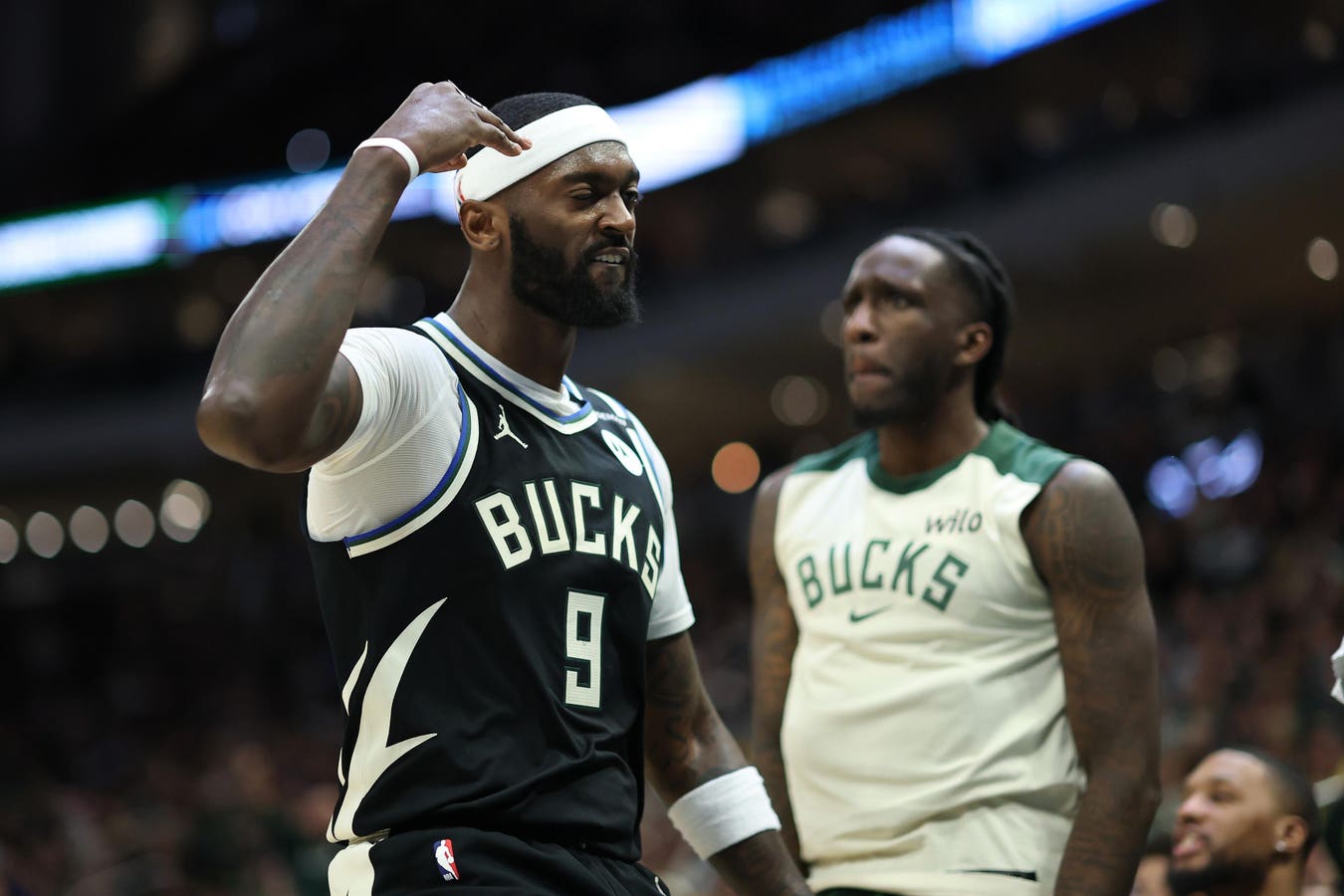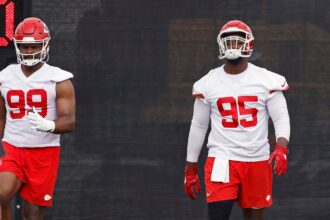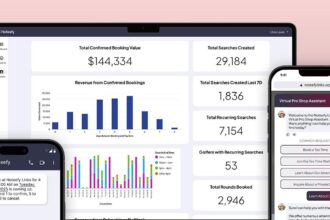MILWAUKEE, WISCONSIN – APRIL 10: Bobby Portis #9 of the Milwaukee Bucks reacts to a three point shot … More
One of the Milwaukee Bucks’ many offseason riddles centers on The Mayor himself—Bobby Portis.
Portis remains a fan favorite, a folk hero who often hears his names being chanted through the stadium at Fiserv Forum. But while his persona looms large in Milwaukee, his on-court future is growing foggier by the week.
Last season was a choppy one. Portis suited up for just 49 games—the fewest of his career—after serving a 25-game suspension for testing positive for Tramadol, a banned painkiller.
His rhythm was off all season. His counting stats still held up: 13.9 points, 8.4 boards, and a career-high 2.1 assists per game. But the efficiency took a nosedive. His effective field goal percentage sank to 52 percent, the lowest of his Bucks tenure.
Portis has always been a polarizing presence defensively, but now there are louder whispers about his offensive role too—particularly his tendency to stall possessions and slow the flow. When the ball sticks, the Bucks’ offense can too.
Milwaukee now stands at a contractual crossroads with Portis. And with the team operating under the suffocating grip of new CBA, every dollar must work overtime. Let’s unpack the options for both sides.
Accept the Player Option
Portis has a $13.4 million player option for the 2025–26 season, which he must exercise by June 30. The cleanest route would be to pick it up and play out the final year of his deal.
The Bucks wouldn’t flinch at that number—they’d gladly bring him back at that cost. But for Portis, this road may be paved with regret. He has leverage now, and leverage left unused is money left on the table. At 30 years old and heading into his age-31 season, this might be his final chance to cash in with a longer-term payday.
Remember: he already gave Milwaukee a hometown discount once. Sentiment is nice, but financial security is nicer.
Decline the Player Option
Then there’s the other door—Portis declines the option and enters unrestricted free agency. That doesn’t necessarily mean he says goodbye to Milwaukee. Thanks to his Bird Rights, the Bucks can exceed the cap to re-sign him, throwing aprons and tax lines to the wind.
They could ink him to a deal that threads the needle—rewarding him with fair value while still preserving tools like the Taxpayer Mid-Level Exception. But it’s a delicate dance. Overpay, and they box themselves into a corner. Underpay, and Portis might bolt for greener pastures—or at least a team that lets him shoot 15 times a game.
Accept the Option and Extend
Another possibility: Portis picks up his player option and agrees to a multi-year extension. This could be a win-win. He locks in long-term money, and the Bucks gain short-term flexibility with a familiar face.
It’s a bit of a unicorn scenario—rare, but not impossible. Would Portis really play for $13.4 million in this economic climate? Unlikely, but stranger things have happened.
Sign-and-Trade
Finally, if Portis opts out but isn’t in Milwaukee’s future plans, the Bucks could pivot to a sign-and-trade. This would allow them to recoup some value for a player they’d otherwise lose for nothing.
The mechanics here are tricky. Sign-and-trades trigger hard caps and require a willing partner. But if it’s clear he’s leaving, the Bucks will want to avoid letting another rotation piece walk for free—especially one who brings as much juice off the bench as Portis.
The Outlook
This is a high-stakes puzzle for a team trying to compete without a full deck. The Bucks want to remain in the contender conversation, even as the Damian Lillard injury timeline grows uncertain. And without cap space or real flexibility, losing Portis would leave a gaping hole they simply can’t fill.
The most likely outcome is that Portis opts out and re-signs with the Bucks on a new multi-year deal. It gives him security and gives Milwaukee stability.










